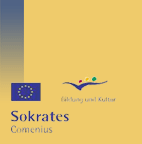The child: psychological and pedagogical considerations
Self-regulated learning
Research on academic self-regulation has
grown out of interest in explaining how students become masters of their own learning
processes (Zimmerman, 2000). Academic self-regulation is not a mental ability,
such as intelligence, or an academic skill, such as reading proficiency;
rather, it is the self-directive process through which learners transform their
mental abilities into academic skills.
Most self-regulation theorists view
learning as a multidimensional process involving personal (cognitive and
emotional), behavioural and contextual components (Zimmerman, 1998.) In their
view, learnfing is an open-ended process that requires cyclical activity on the
part of the learner that occurs in three major phases: forethought, performance
or volitional control, and self-reflection. The forethought phase refers to
influential processes and beliefs that precede efforts to learn and set the
stage for such learning(
) the performance or volitional control, involves
processes that occur during learning efforts and affect concentration and
performance(
) self-reflection, involves processes that occur after learning
efforts and influence a learners reactions to that experience. These self-
reflections, in turn, influence forethought regarding subsequent learning
efforts, thus completing the self-regulatory cycle (Zimmerman, 1998:2).
Table
2-Self-regulatory sub-processes of naïve and skilful learners
|
Self-
regulatory phases
|
Classes of
self-regulated learners
|
|
Naïve
self-regulators
|
Skilful
self-regulators
|
|
Forethought
|
Non-specific
distal goals
Performance
goal orientation
Low
self-efficacy
Disinterested
|
Specific
hierarchical goals
Learning
goal orientation
High
self-efficacy
Intrinsically
interested
|
|
Performance or volitional control
|
Unfocused
plan
Self-handicapping
strategies
Outcome
self-monitoring
|
Focused
on performance
Self-instruction/imagery
Process
self-monitoring
|
|
Self-reflection
|
Avoid
self-evaluation
Ability
attributions
Negative
self-reaction
Non-adaptive
|
Seek
self-evaluation
Strategy/practice
attributions
Positive
self-reactions
Adaptive
|
(Adapted of Zimmerman, 1998:6)
It is essential to provide personal,
social, and environmental conditions that lead students to become skilful
rather than naïve self-regulators of their academic learning. We can consider
two essential sources of self-regulation: social (including adults-parents,
coaches, teachers and peers-siblings, friends, classmates) and self-directed
experiences. Academic self-regulation can be learned through a core set of
instructional and personal practice experiences by diverse students, ranging in
age from primary school to higher education.
In
early education there is a consensus that young children are learning to be
independent - to control and direct their behaviour effectively both in
interaction with others and when engaged in mastery tasks. There is an
understanding that young children function in an integrated way.
As Bronson emphasized (2000:245): Teachers of young
children know that they learn about the world and learn to solve problems when
they play and that play is their way of experimenting with new ideas and
practising skills. Early childhood educators need to hold fast to these
understandings in the face of increasing academic standards for early
childhood classrooms. It is not that young children cannot or should not learn
letters and numbers and concepts in science, because they can and are interested
in these concepts if presented appropriately. However, long periods of teacher
instruction and longer periods of filling out work sheets at desks or tables
are not the most effective means of supporting learning, self-regulated
learning, or love for learning at these ages.
Schools
can encourage children to see knowledge as cultural tools by building
appropriate choice and individual control into a curriculum that interests and
challenges each individual at an appropriate level, emphasizes internal rewards
rather than external control, and allows space and time for each childs
personal quest.











